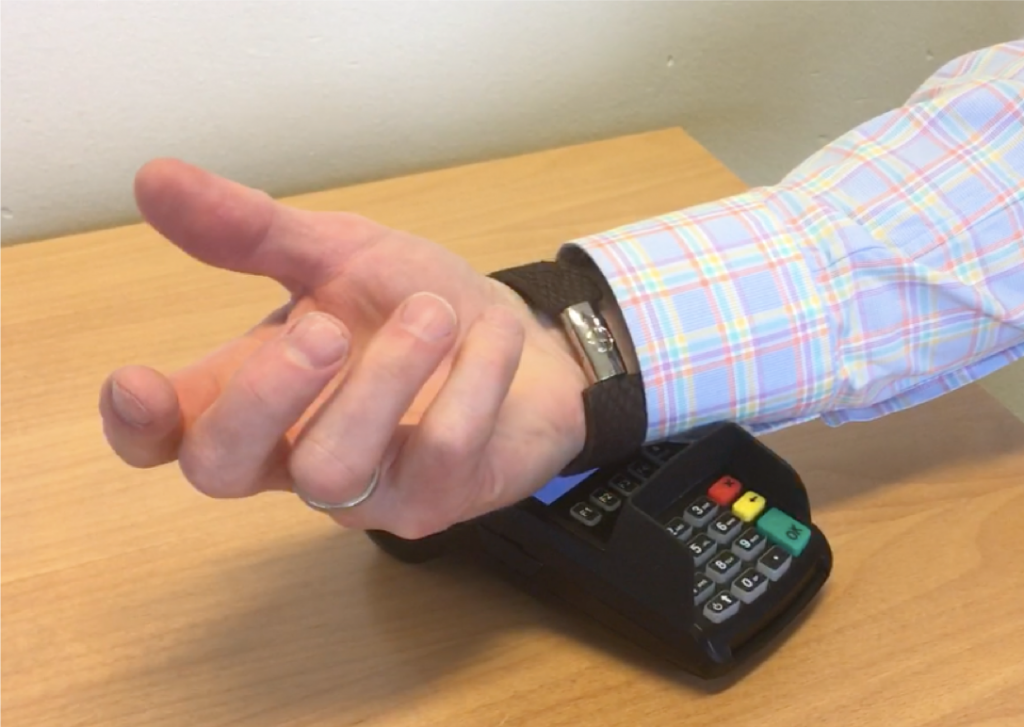Dear Luc: Should I prepare for a wearable payments comeback post-COVID?
In Dear Luc, we answer the questions the industry’s fintech founders are too afraid to ask, and solve the problems they don’t want their VCs to know about.
From regulation readiness to technology teething troubles, our start-up agony uncle, Luc Gueriane, is here to help.
Luc has over seven years’ experience working with flagship fintechs like Revolut, Wise (formerly TransferWise), Monzo and Curve.
His expertise and extensive work in the fintech ecosystem mean that Luc is able to offer unique insight into the building of a successful fintech company.
Confession #10: Are wearables coming back?
Dear Luc,
As social distancing will soon end, should I start to think about wearable capabilities for my service?
There is no denying that announcements of national and regional lockdowns have impacted consumer behaviour with in-person shopping taking the biggest hit.
Lockdowns and additional fears of Coronavirus possibly being spread more rapidly via physical payments have called for a greater demand for digital payment methods. As such, contactless cards, mobile wallets and wearable devices have quite literally come to the rescue.
Gartner predicts that worldwide spending on wearable devices will rack up to $81.5 billion in 2021, an 18.1% increase on 2020. And no doubt COVID will play a big role in this leap, as the limit for contactless has already increased to £100.
But despite this surge, are wearable payment devices right for your business? Well, let’s look into that.
Wearable payment devices are based on near-field communication (NFC) technology and are linked to a user’s debit or credit card. They come in a huge variety of options with payments now being made possible through bracelets, necklaces, sunglasses, watches, rings, key fobs, shirts, fitness trackers, and many more.
An important thing to note here is that for most of these devices the unique selling point is their wearable capability – meaning that apart from this, no additional features are added to its existing programme to enhance its functionality.
There are a number of very natural use cases where having a wearable device makes life easier for consumers. A perfect example would be providing teenagers with access to their pocket money through wearables. Cards and accounts that offer both child and parent access to funds and visibility on spending are increasingly being marketed to families.
As an alternative to this, providing a wearable device linked to a mobile wallet could be more straightforward to administer for busy parents and satisfy the needs of those who may not want to give their children access to a bank account or card. A wearable device can teach children and teens how to budget without the level of responsibility required to run a bank account or credit facility.
Another interesting example of wearables is Inamo, an Australian-based company that have created waterproof devices for travellers, surfers and beach-goers so that they can make tap and go contactless payments without having to worry about their wallets being stolen on the beach. A simple yet effective illustration of a fintech who has thought deeply about who will be using their products.
So, with rising competition in the market and everyone aiming to be ‘top of wallet’ for their users, could adding an extra payment capability to your solution encourage users to make their payments through you? And is it a necessity to succeed?

Will wearables make a return as social distancing reduces?
First, understand whether your existing customer base would benefit from a wearable device. Some people absolutely love the buzz of paying with an alternative payment method, whereas others are completely fine paying with their plastic card.
You need to understand whether they would see it as an easier option for their day-to-day spending or whether they would be just as comfortable using their physical cards.
A lot of customer research would be needed to ensure that your idea has enough potential to see a reasonable amount of uptake from your customers. As much as it could seem like the next exciting innovation for your fintech, it is important to focus on what your customers actually need.
Second, is the additional cost for the wearable device worthwhile pursuing? Wearable devices will come at a higher price tag than providing debit or credit cards alone, which in turn will involve higher postage costs, higher logistics and stock control. Would you pass this cost on to the customer and would they be prepared to pay?
Although it would be a relatively simple process to work with your issuer and processor to get your wearable device set up (as it is similar to having a partner card model), the revenue from transactions can be quite small to begin with. You would also need to ensure that the number and size of transactions would make it worthwhile to add to your existing proposition.
This can be why we often see wearable propositions in the market targeted at HNW (high net worth) or UHNW (ultra high net worth) users. They come disguised as luxurious looking accessories and naturally have a higher price tag attached, just like the Armillion men’s bracelet for instance.
Third, think about the geographic locations that you’d like your device to be used in. Wearable devices can be used anywhere that contactless is accepted but limits do apply in certain locations. Certain markets, noticeably the UK, don’t have the functionality to be able to go online and check the PIN for a consumer. This will limit the transaction amount to £45 whereas countries like France, Switzerland and Germany have no upper threshold limit for contactless payments.
If you want to advertise your wearable advice as an easier option for your customer than using their card, these types of restrictions would need to be taken into consideration.
All in all, wearable devices can be seen as a very appealing market to tap into. Even before social restrictions, companies were looking to create the latest and greatest functionalities within this field. However, if you’re thinking of adding a wearable capability to your services you would need to look internally at whether this is the right move for your business.
Would your customer base jump on the trend? Is there a big enough profit margin to make it worth your while? Are there any geographical restrictions limiting your reach? All of these questions need to be considered before you offer wearable capabilities.
Do you have an embarrassing question you want answered, or a seemingly unsolvable problem you’d want help with? Post an anonymous comment below, or email FinTech Futures’ Alex Hamilton in confidence.
YOU CAN READ ALL OUR AGONY UNCLE STORIES HERE












































